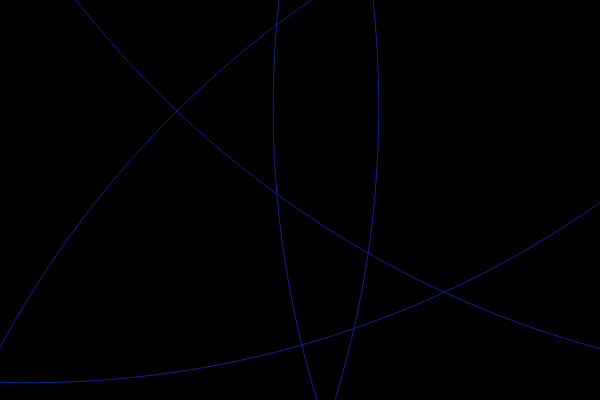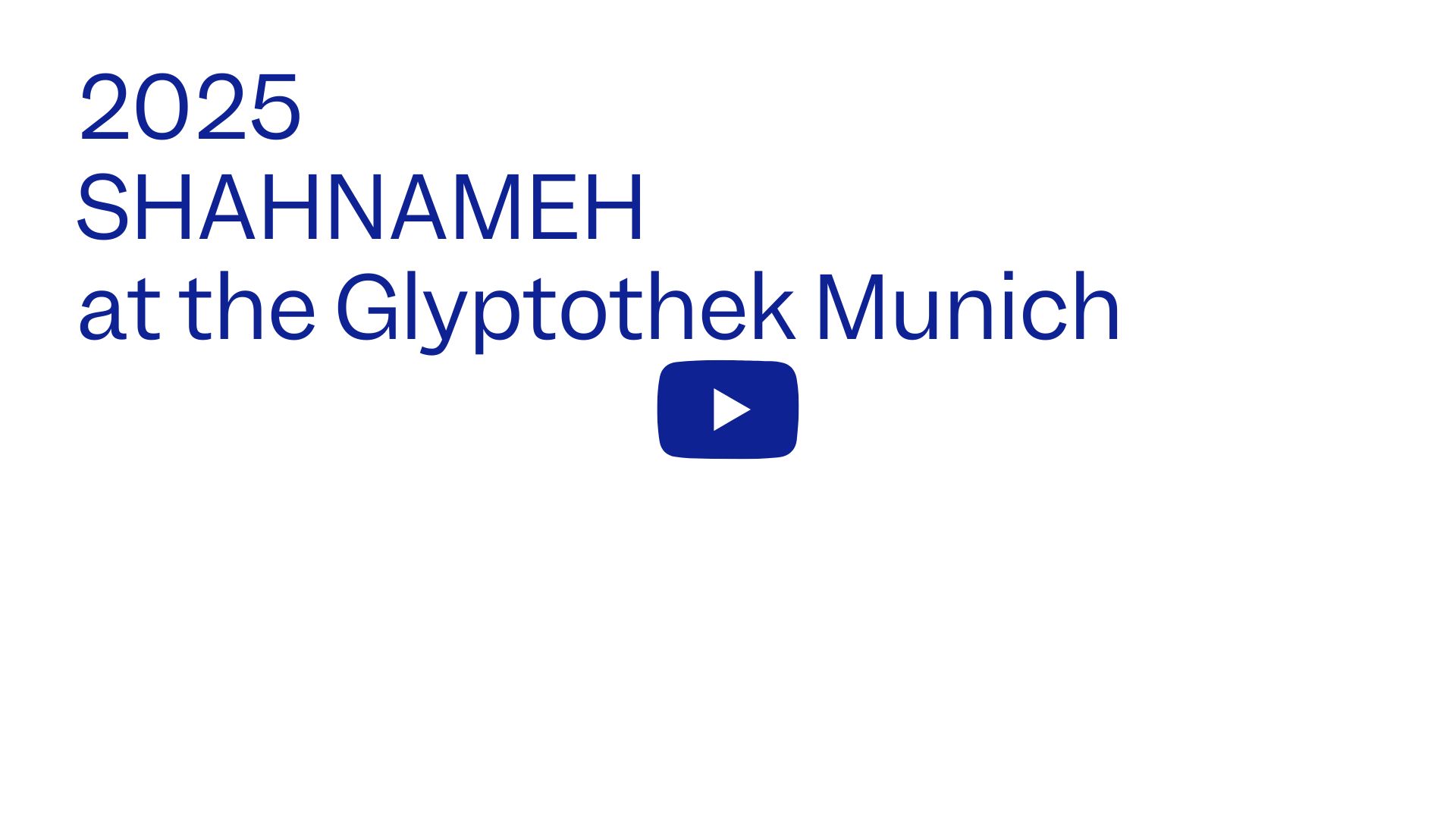
The Persian and European cultures have been closely intertwined since their beginnings and share many common origins. With Herodotus' work The Histories, historiography was, for the first time, separated from mythology, laying the foundations of historical analysis. It narrates the rise of Persia as a hegemonic empire under the Achaemenid dynasty. Around 40 years earlier, in 472 BC, the tragedian Aeschylus wrote The Persians, the oldest surviving play in human history.
In an act of performative and conceptual cultural remembrance, Tar virtuoso Elshan Ghasimi revives the millennia-old interconnections between these two cultural spheres. The barbaric faun and the archaic kouroi enter into a poetic dialogue with the Persian epic Shahnameh and the trumpet of Philipp Püschel. Another new departure in a 2,500-year history.

The Schahnameh ("The Book of Kings") reflects the mythic origins of the Persian-speaking world. In a new reinterpretation, Elshan Ghasimi and Philipp Püschel bring this epic into the present, merging tradition with modernity. Ghasimi, a master of the Persian Tar, and Püschel, playing trumpet and using analog effects and live electronics, explore cultural memory through contemporary sounds. Rooted in the Radif and inspired by Firdausī’s vision, the duo blends jazz, improvisation, and electronic soundscapes, dissolving borders between past and present, East and West.
Video

In 2023, Elshan Ghasimi's ‘Reinterpretation of the Radif’ was selected for the Showcase WOMEX 23 in A Coruña, Spain.

A film by Stark & Shakupa
The Radīf is the repertoire of Persian classical music. This collection of melodies, divided into twelve modular systems, called the Dastgāhs and Avâz’, has been passed down orally for thousands of years.

On 10 November 2022, the Iranian composer, virtuoso and tar master Elshan Ghasimi premiered the first part of her interpretation of Persian classical music in the Basilica of the Bode-Museum in Berlin. She is thus the first woman to dedicate herself to the systematic renewal of this millennia-old tradition.

On the occasion of the exhibition Iran - Art and Culture from Five Millennia, Elshan Ghasimi composed to various artefacts from the London Sarikhani Collection and the Museum of Islamic Art. The documentary was created in cooperation with the filmmakers Stark & Shakupa and the DUAT Agency.

A musical dialogue between Persian classical music, poetry and new music. Texts by Jalāl ad-Dīn Mohammad Balkhī and Elshan Ghasimi.

The table is an ancient cultural symbol, a place of gathering and exchange. As part of the Tafelmusik programme, the virtuosos Jeremias Schwarzer (recorder), Johannes J. Fischer (percussion) and the baroque orchestra Concerto Köln were Ghasimi’s guests.

A composition of classical Persian music for baroque orchestra and percussion.

Anne von Twardowski and Sonja Lena Schmid meet tar player and singer Elshan Ghasimi and electronic great ADA. To a session with baroque and modern chamber music, Persian classical music, a suite by Stravinsky and improvisations with electronics.

Composition and musical Object Interpretation: Elshan Ghasimi
Photographic Object Interpretation: Michal Martychowiec
Concept & Narrative: Julian Malte Hatem Schindele
Objects from the El Arbi Bouqdib Archive
More information about the El Arbi Bouqdib Archive
About Michal Martychowiec

Elshan Ghasimi plays one of the classical repertoires of the tar master Ali Akbar Khan Shahnazi.

Release date: December 31, 2018
Label: Bublitz Music
What does a magnetic field generator sound like? What does the last cigarette lighter say? Whose hands are there, coming towards us, and what is the secret behind the star chart?
more information
Ein Garten Singender Dinge
What does a magnetic field generator sound like? What does the last cigarette lighter say? Whose hands are there, coming towards us, and what is the secret behind the star chart?
Elshan Ghasimi’s concept album Elies Miniatures I – Ein Garten singender Dinge combines classical Persian music with the demands of contemporary conceptual art and the processing of an archive.
With the utmost sensitivity in musical expression, the world-class soloist leads us into a new musical universe on the tar. As a composer, she interlaces different modal scales of the Radīf*, combines them with influences and elements of minimal music and interweaves poetry by Omar Chayyām, Hossein Gol-e-Golab, Hatef Esfahani and her own texts. On this album, Ghasimi appears in various roles as composer, soloist, singer and reciter.
This results in 19 highly divergent musical miniatures based on 19 objects from the estate of the forgotten Moroccan mathematician, poet and mystic El Arbi Bouqdib. A medley of stories and memories within a garden of singing things.
Every single composition on the first album is a delight of direct experience and critical reflection. They are playful and serious, tragically alive. In a tour d’horizon, they recount fragments from the life of this unknown researcher and his existence between poetry, religion, magic, family and science.
The melodies are object interpretations and subjective memory monads, formulated in the (virtually unknown to us) language of classical Persian music. It is not insignificant that Ghasimi, as an Iranian musician, honours and sings the praises of a man from Morocco with Arabic as one of his mother tongues. She firmly understands this as a gesture of conciliatory communication.
As album, concert and exhibition cycle, Elies Miniatures is an ongoing narrative, as well as a novel form of merging music, concert, visual art, exhibition and biographical narration, thereby creating a visible, audible and imaginable experience. Ein Garten singender Dinge is thus the beginning of a journey to somebody unknown undertaken by different artists in various art forms.
Both narration and concept, i.e. idea, arrangement and naming of the objects from the El Arbi Bouqdib Archive, founded in 2016, have been developed by JMH Schindele. Through his photographic object interpretation, the Polish- Chinese conceptual artist Michal Martychowiec breathes further dimensions of playful individuality into the artefacts. Both artists and archive are part of Thesaurós (Greek, treasure house), a platform within the Bublitz network.
* The Radīf (English, order, ranking) is a melody repertoire of classical Persian music and a collection of hundreds of melodic figures, so-called Guschehs. These tunes are organised within twelve sound systems, called Dastgāh and Awaz.
Music

Release date: December 31, 2018
Label: Bublitz Music
The concept album Elies Miniatures II – Archivblumen is the second chapter of the concert and exhibition cycle Elies Miniatures by the Persian tar virtuoso Elshan Ghasimi.
more information
Archivblumen
The concept album Elies Miniatures II – Archivblumen is the second chapter of the concert and exhibition cycle Elies Miniatures by the Persian tar virtuoso Elshan Ghasimi.
In contrast to the first album, Ein Garten singender Dinge, which interweaves several modal sound systems from the Radīf*, Ghasimi has used a single Dastgāh* in this album, thus making Elies Miniatures II a classical work in the tradition of Persian art music. Her musical narration, within the Dastgāh-e Navā, is based on a late performance by the tar master Morteżā Ney-Dāwud (1900–1990).
With her usual measured ease, Ghasimi moves from melody to melody and creates a sonorous Gesamtkunstwerk on the unusual subject of 19 diskettes. These objects from the estate of the largely unknown Moroccan mathematician, poet and mystic El Arbi Bouqdib, can be metaphorically understood as memory bearers and almost archetypal storage media. Today they have already served their purpose. In the context of the overall concept of Elies Miniatures, they stand for the function of the archive as a memory institution in general.
As album, concert and exhibition cycle, Elies Miniatures is an ongoing narrative as well as a novel form of merging music, concert, visual art, exhibition and biographical narration, thereby creating a visible, audible and imaginable experience. Classical Persian music is combined with the demands of contemporary conceptual art and the processing of an archive.
* The Radīf (English order, ranking ) is the melody repertoire of classical Persian music and a collection of hundreds of melodic figures, so-called Guschehs. These tunes are organised within twelve sound systems, called Dastgāh and Awaz.
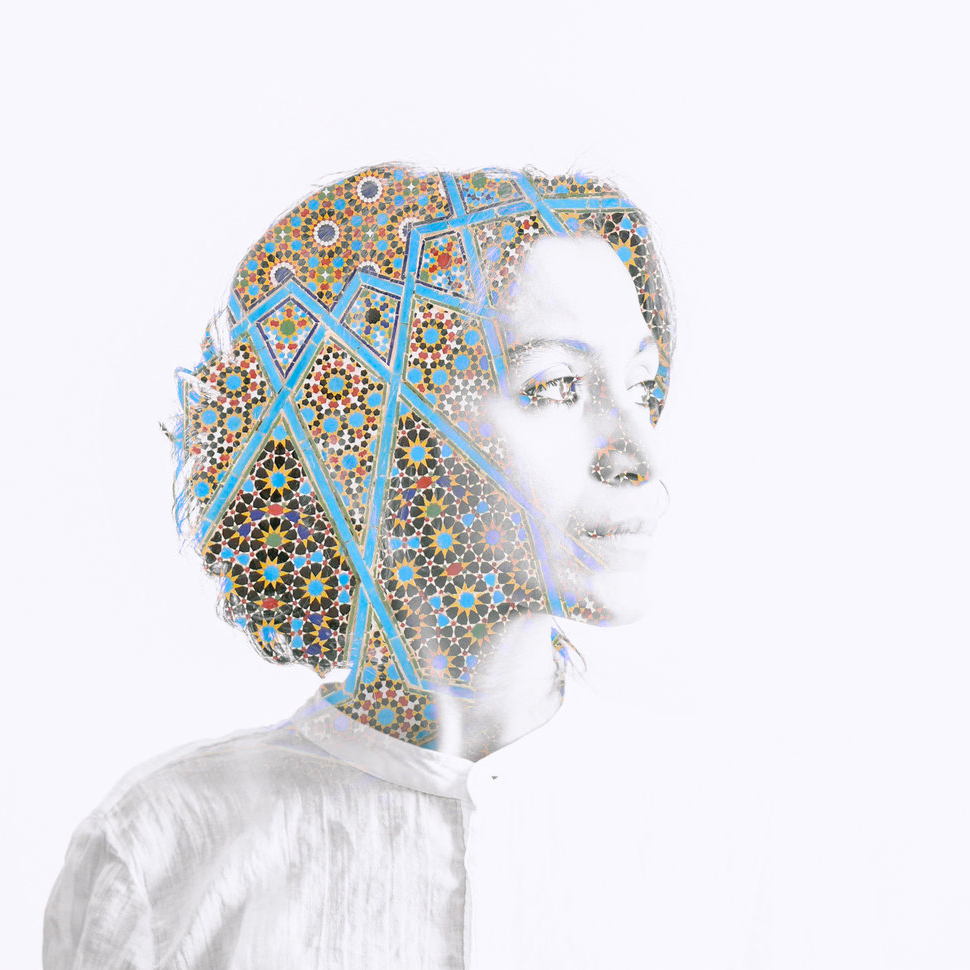
Release date: April 25, 2018
Label: Bublitz Music
Gilgamesh is a composition for two setars in Dastgāh-e Chahārgāh. A tribute to the oldest epic in history.
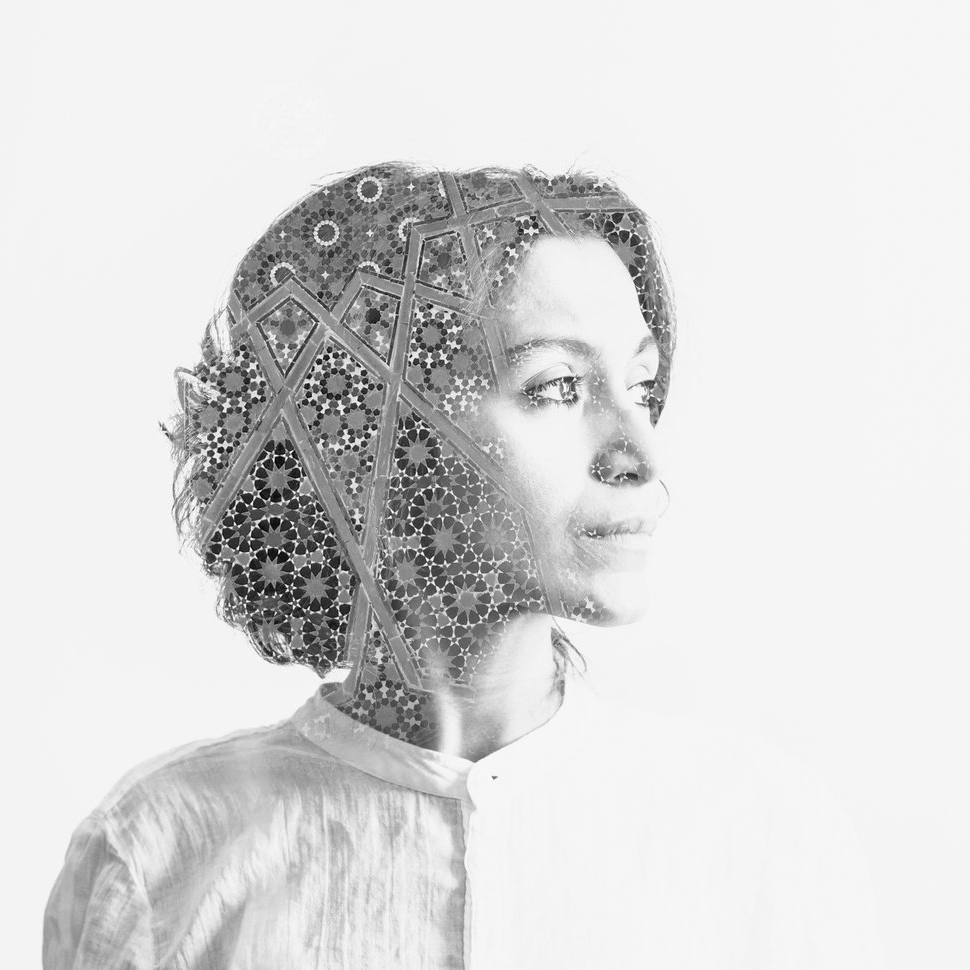
Release date: April 24, 2018
Label: Bublitz Music
The motif of the Coming God has been deeply imprinted in the cultural memory of humanity latest since Hölderlin's master elegy "Brod und Wein": " From there he comes, and there he is pointing, the coming god."

© Stefan Hähnel

© Madeleine Brunnmeier
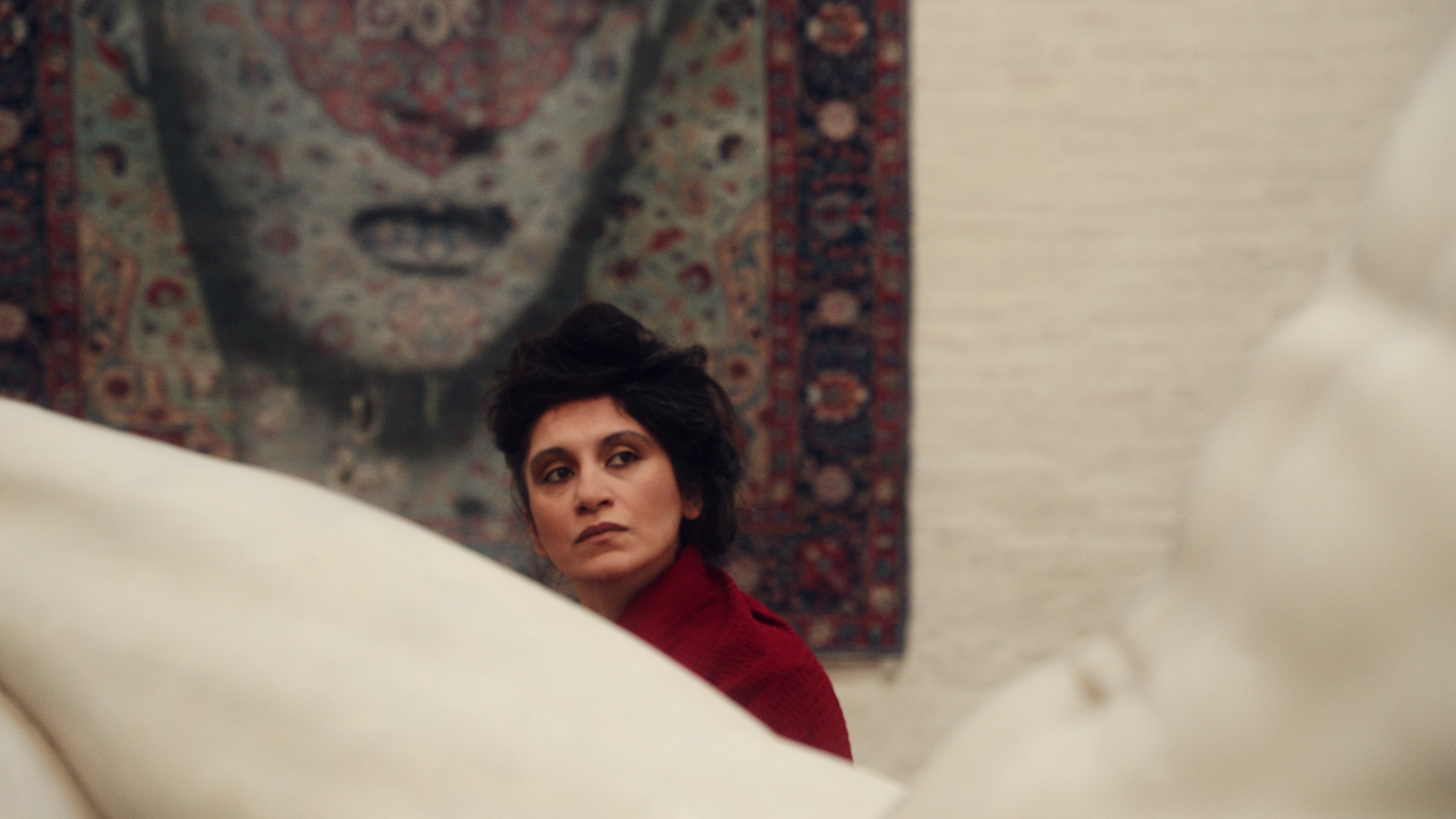
© Georg Stirnweiß
Gallery
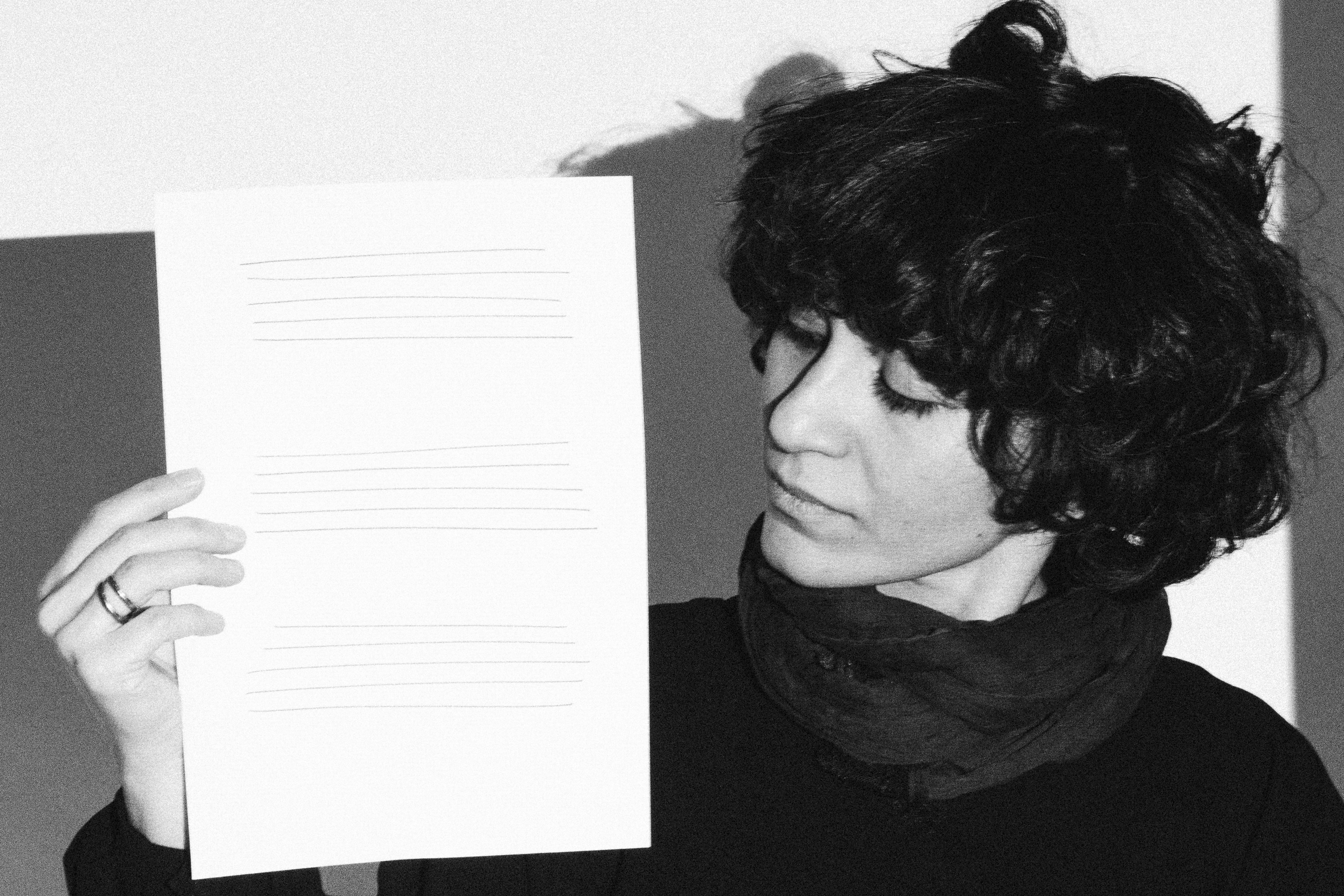
© Arnaud Ele
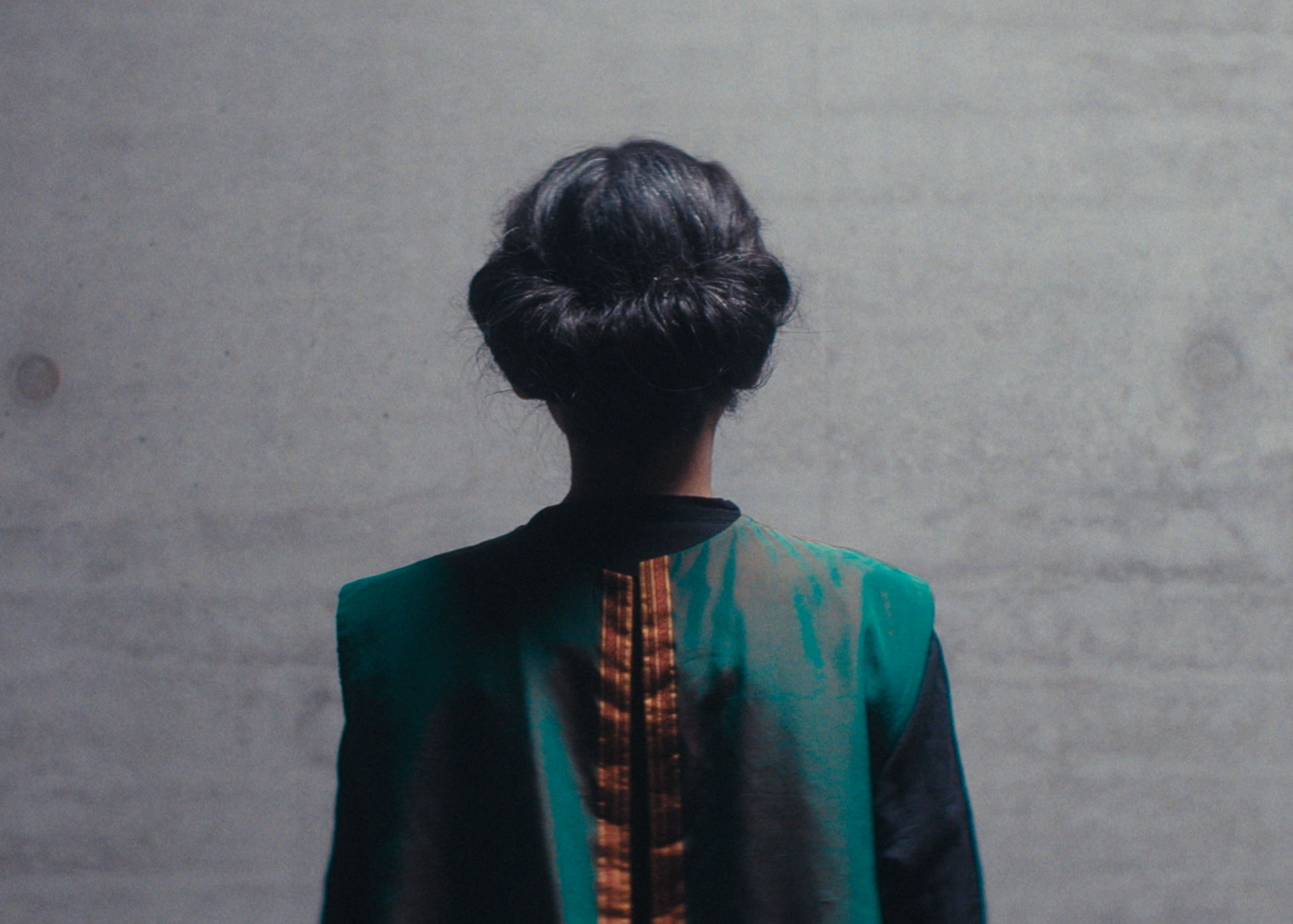
© Stark & Shakupa

© Madeleine Brunnmeier
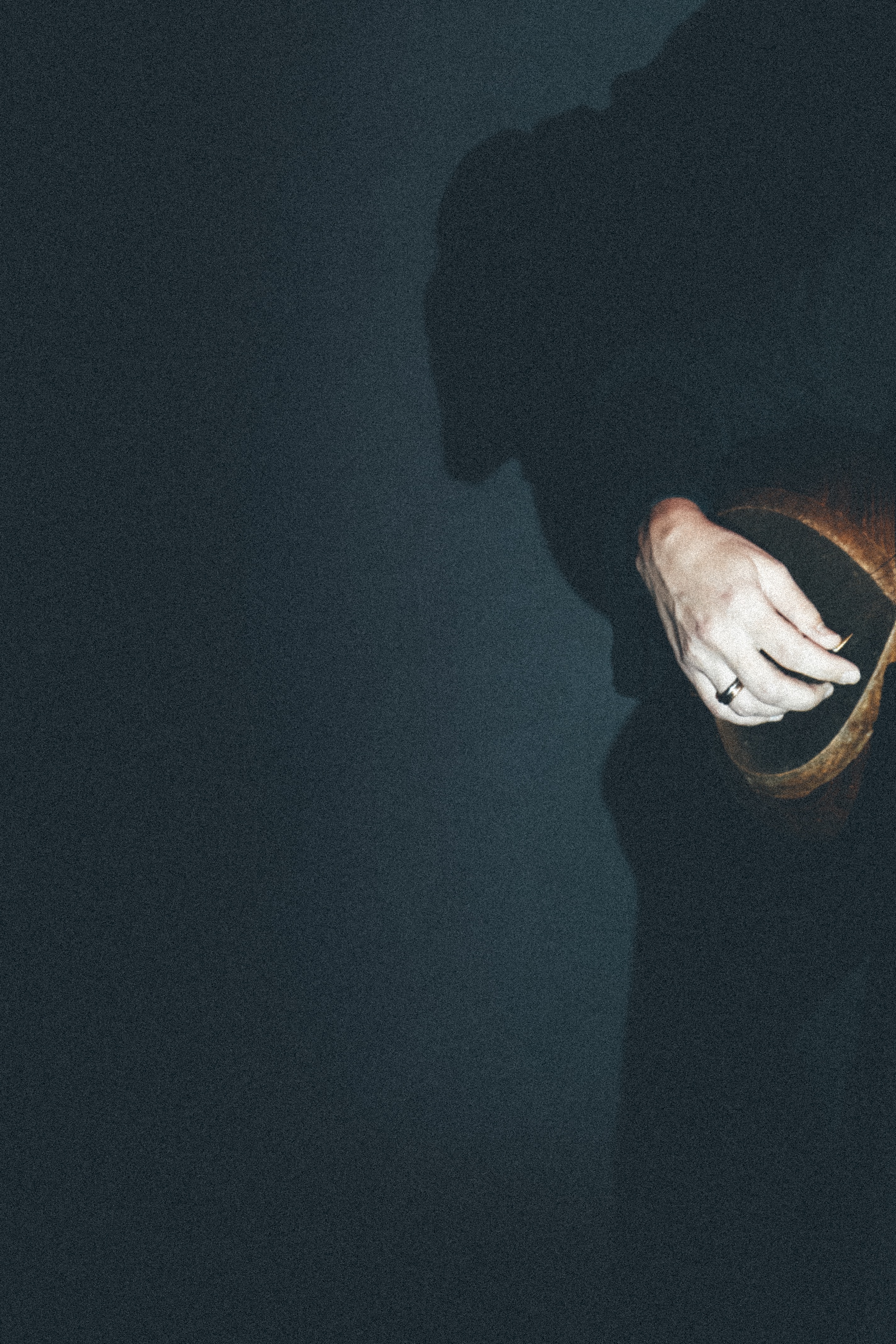
© Arnaud Ele

© Arnaud Ele
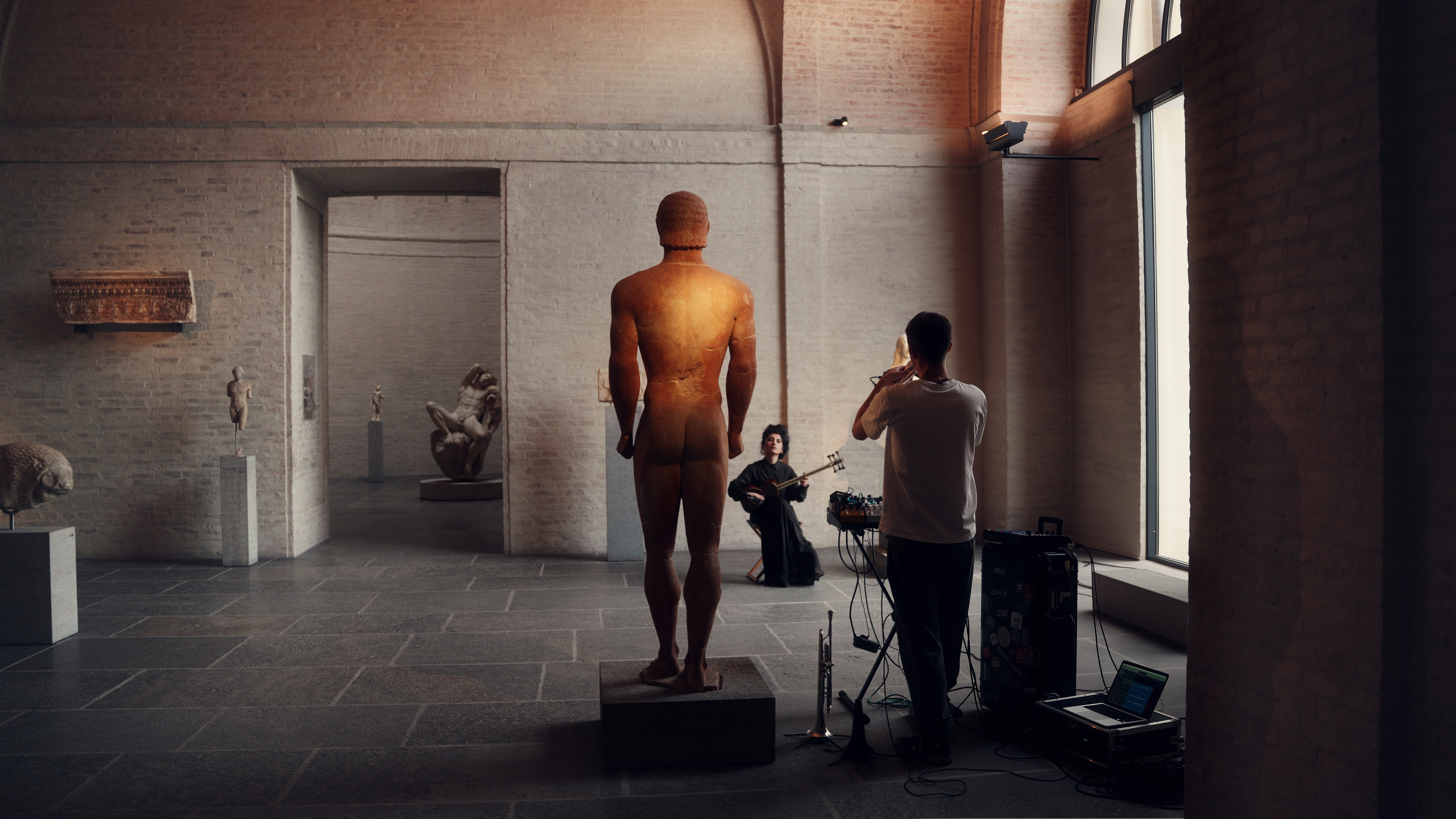
© Georg Stirnweiß

© Georg Stirnweiß
.
The Persian and European cultures have been closely intertwined since their beginnings and share many common origins. With Herodotus' work The Histories, historiography was, for the first time, separated from mythology, laying the foundations of historical analysis. It narrates the rise of Persia as a hegemonic empire under the Achaemenid dynasty. Around 40 years earlier, in 472 BC, the tragedian Aeschylus wrote The Persians, the oldest surviving play in human history.
In an act of performative and conceptual cultural remembrance, Tar virtuoso Elshan Ghasimi revives the millennia-old interconnections between these two cultural spheres. The barbaric faun and the archaic kouroi enter into a poetic dialogue with the Persian epic Shahnameh and the trumpet of Philipp Püschel. Another new departure in a 2,500-year history.
The Schahnameh ("The Book of Kings") reflects the mythic origins of the Persian-speaking world. In a new reinterpretation, Elshan Ghasimi and Philipp Püschel bring this epic into the present, merging tradition with modernity. Ghasimi, a master of the Persian Tar, and Püschel, playing trumpet and using analog effects and live electronics, explore cultural memory through contemporary sounds. Rooted in the Radif and inspired by Firdausī’s vision, the duo blends jazz, improvisation, and electronic soundscapes, dissolving borders between past and present, East and West.
In 2023, Elshan Ghasimi's ‘Reinterpretation of the Radif’ was selected for the Showcase WOMEX 23 in A Coruña, Spain.
A film by Stark & Shakupa
The Radīf is the repertoire of Persian classical music. This collection of melodies, divided into twelve modular systems, called the Dastgāhs and Avâz’, has been passed down orally for thousands of years.
On 10 November 2022, the Iranian composer, virtuoso and tar master Elshan Ghasimi premiered the first part of her interpretation of Persian classical music in the Basilica of the Bode-Museum in Berlin. She is thus the first woman to dedicate herself to the systematic renewal of this millennia-old tradition.
A musical dialogue between Persian classical music, poetry and new music. Texts by Jalāl ad-Dīn Mohammad Balkhī and Elshan Ghasimi.
The table is an ancient cultural symbol, a place of gathering and exchange. As part of the Tafelmusik programme, the virtuosos Jeremias Schwarzer (recorder), Johannes J. Fischer (percussion) and the baroque orchestra Concerto Köln were Ghasimi’s guests.
A composition of classical Persian music for baroque orchestra and percussion.
Anne von Twardowski and Sonja Lena Schmid meet tar player and singer Elshan Ghasimi and electronic great ADA. To a session with baroque and modern chamber music, Persian classical music, a suite by Stravinsky and improvisations with electronics.
Composition and musical Object Interpretation: Elshan Ghasimi
Photographic Object Interpretation: Michal Martychowiec
Concept & Narrative: Julian Malte Hatem Schindele
Objects from the El Arbi Bouqdib Archive
More information about the El Arbi Bouqdib Archive
About Michal Martychowiec
Elshan Ghasimi plays one of the classical repertoires of the tar master Ali Akbar Khan Shahnazi.
.
What does a magnetic field generator sound like? What does the last cigarette lighter say? Whose hands are there, coming towards us, and what is the secret behind the star chart?
more information
Ein Garten Singender Dinge
What does a magnetic field generator sound like? What does the last cigarette lighter say? Whose hands are there, coming towards us, and what is the secret behind the star chart?
Elshan Ghasimi’s concept album Elies Miniatures I – Ein Garten singender Dinge combines classical Persian music with the demands of contemporary conceptual art and the processing of an archive.
With the utmost sensitivity in musical expression, the world-class soloist leads us into a new musical universe on the tar. As a composer, she interlaces different modal scales of the Radīf*, combines them with influences and elements of minimal music and interweaves poetry by Omar Chayyām, Hossein Gol-e-Golab, Hatef Esfahani and her own texts. On this album, Ghasimi appears in various roles as composer, soloist, singer and reciter.
This results in 19 highly divergent musical miniatures based on 19 objects from the estate of the forgotten Moroccan mathematician, poet and mystic El Arbi Bouqdib. A medley of stories and memories within a garden of singing things.
Every single composition on the first album is a delight of direct experience and critical reflection. They are playful and serious, tragically alive. In a tour d’horizon, they recount fragments from the life of this unknown researcher and his existence between poetry, religion, magic, family and science.
The melodies are object interpretations and subjective memory monads, formulated in the (virtually unknown to us) language of classical Persian music. It is not insignificant that Ghasimi, as an Iranian musician, honours and sings the praises of a man from Morocco with Arabic as one of his mother tongues. She firmly understands this as a gesture of conciliatory communication.
As album, concert and exhibition cycle, Elies Miniatures is an ongoing narrative, as well as a novel form of merging music, concert, visual art, exhibition and biographical narration, thereby creating a visible, audible and imaginable experience. Ein Garten singender Dinge is thus the beginning of a journey to somebody unknown undertaken by different artists in various art forms.
Both narration and concept, i.e. idea, arrangement and naming of the objects from the El Arbi Bouqdib Archive, founded in 2016, have been developed by JMH Schindele. Through his photographic object interpretation, the Polish- Chinese conceptual artist Michal Martychowiec breathes further dimensions of playful individuality into the artefacts. Both artists and archive are part of Thesaurós (Greek, treasure house), a platform within the Bublitz network.
* The Radīf (English, order, ranking) is a melody repertoire of classical Persian music and a collection of hundreds of melodic figures, so-called Guschehs. These tunes are organised within twelve sound systems, called Dastgāh and Awaz.

Release date: December 31, 2018
Label: Bublitz Music
The concept album Elies Miniatures II – Archivblumen is the second chapter of the concert and exhibition cycle Elies Miniatures by the Persian tar virtuoso Elshan Ghasimi.
more information
Archivblumen
The concept album Elies Miniatures II – Archivblumen is the second chapter of the concert and exhibition cycle Elies Miniatures by the Persian tar virtuoso Elshan Ghasimi.
In contrast to the first album, Ein Garten singender Dinge, which interweaves several modal sound systems from the Radīf*, Ghasimi has used a single Dastgāh* in this album, thus making Elies Miniatures II a classical work in the tradition of Persian art music. Her musical narration, within the Dastgāh-e Navā, is based on a late performance by the tar master Morteżā Ney-Dāwud (1900–1990).
With her usual measured ease, Ghasimi moves from melody to melody and creates a sonorous Gesamtkunstwerk on the unusual subject of 19 diskettes. These objects from the estate of the largely unknown Moroccan mathematician, poet and mystic El Arbi Bouqdib, can be metaphorically understood as memory bearers and almost archetypal storage media. Today they have already served their purpose. In the context of the overall concept of Elies Miniatures, they stand for the function of the archive as a memory institution in general.
As album, concert and exhibition cycle, Elies Miniatures is an ongoing narrative as well as a novel form of merging music, concert, visual art, exhibition and biographical narration, thereby creating a visible, audible and imaginable experience. Classical Persian music is combined with the demands of contemporary conceptual art and the processing of an archive.
* The Radīf (English order, ranking ) is the melody repertoire of classical Persian music and a collection of hundreds of melodic figures, so-called Guschehs. These tunes are organised within twelve sound systems, called Dastgāh and Awaz.

Release date: December 31, 2018
Label: Bublitz Music
Gilgamesh is a composition for two setars in Dastgāh-e Chahārgāh. A tribute to the oldest epic in history.

Release date: April 25, 2018
Label: Bublitz Music
The motif of the Coming God has been deeply imprinted in the cultural memory of humanity latest since Hölderlin's master elegy "Brod und Wein": " From there he comes, and there he is pointing, the coming god."

Release date: April 24, 2018
Label: Bublitz Music
.

© Stefan Haehnel

© Madeleine Brunnmeier

© Georg Stirnweiß

© Arnaud Ele

© Stark & Shakupa

© Madeleine Brunnmeier

© Georg Stirnweiß

© Arnaud Ele

© Arnaud Ele

© Georg Stirnweiß
© 2025 Elshan Ghasimi. All rights reserved.
Imprint
Privacy Policy
Site-Info
Design & Realisation
Masoud Morgan
Contact:
contact@elshanghasimi.com
